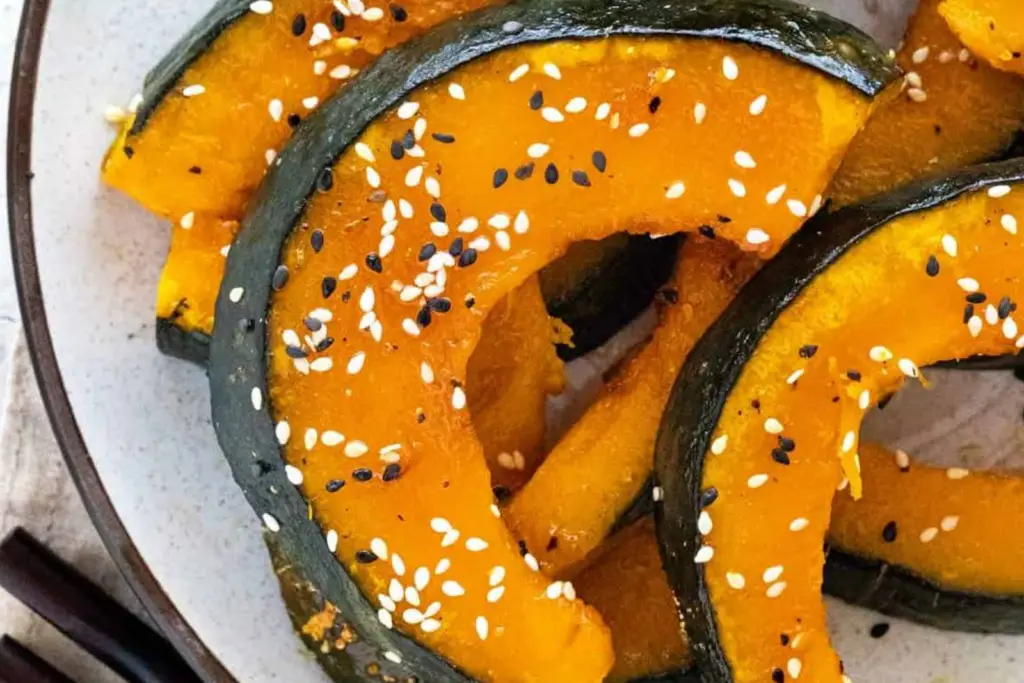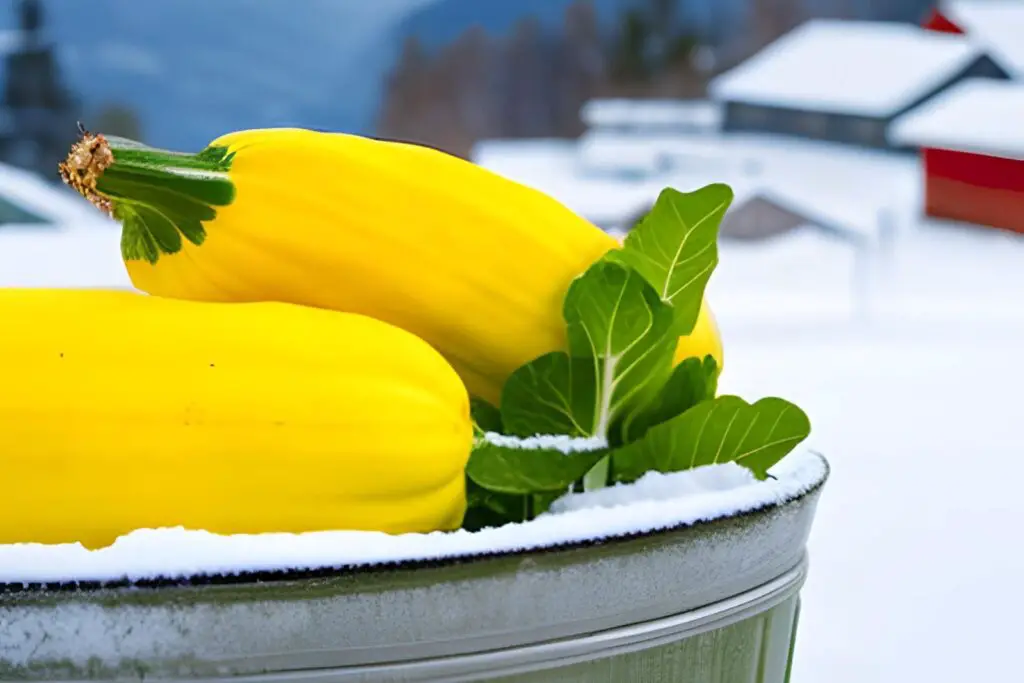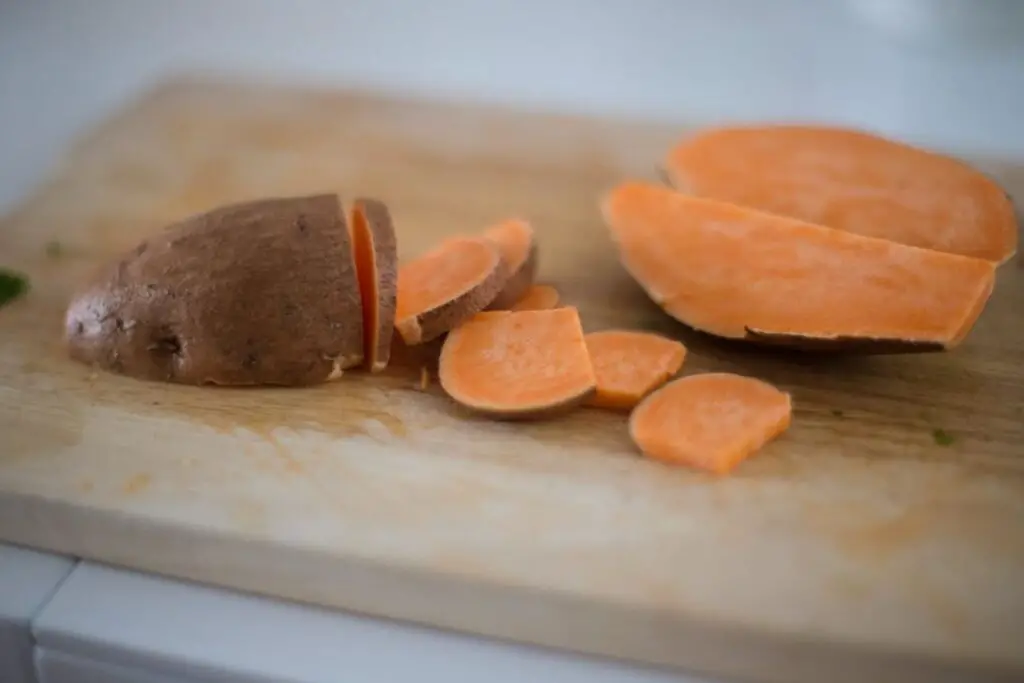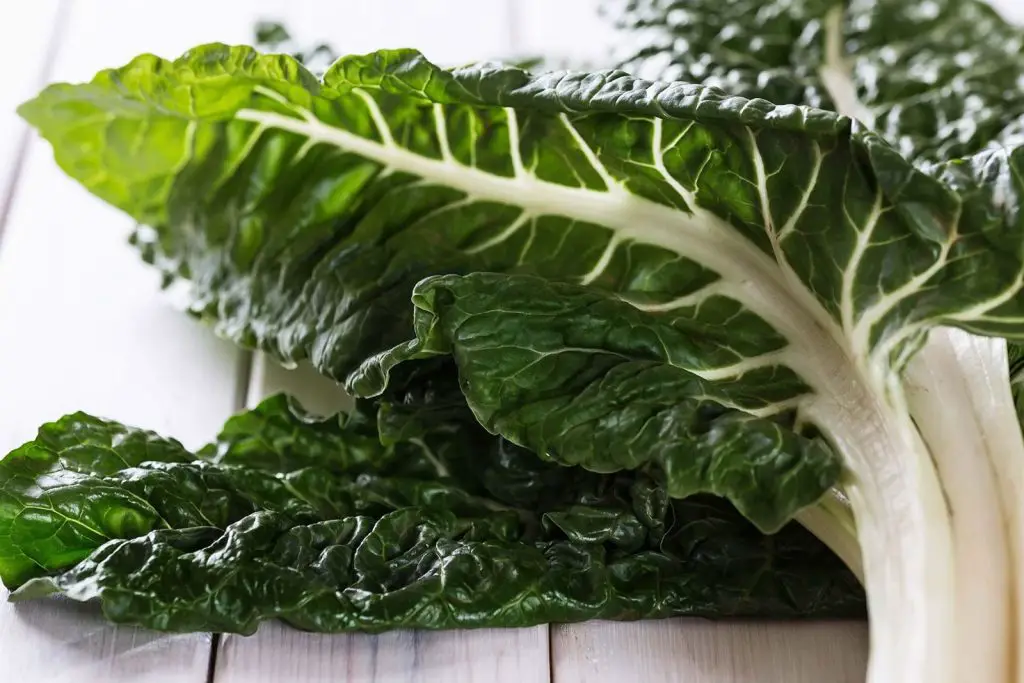
Spring greens are a vibrant and nutritious addition to any diet, offering a burst of fresh flavors and essential vitamins. These tender and leafy vegetables are often enjoyed during the spring season when they are at their peak. Freezing spring greens is an excellent way to preserve their goodness and enjoy them throughout the year. By following a few simple steps, you can ensure that your frozen spring greens maintain their texture and nutritional value. This article outlines a comprehensive guide on freezing spring greens, allowing you to savor their goodness whenever you desire.
Here’s a step-by-step guide on how to freeze spring greens:
Step 1: Choose fresh spring greens
When embarking on the journey of freezing spring greens, the first and foremost consideration is the selection of the greens themselves. The quality of the greens you choose at this stage will significantly impact the final outcome of your frozen produce. Freshness is the key, and there are several key points to understand and observe as you make your selection.
Explaining the Importance:
- Crispness: Spring greens, renowned for their tender texture and delicate flavors, should be chosen while they are still crisp. Crispness signifies the vibrancy and youth of the greens, ensuring that they will hold up well during the freezing process and maintain a pleasant texture when thawed.
- Vibrancy: The vibrant colors of spring greens not only add visual appeal to your meals but also indicate their nutritional content. Rich and vibrant colors often translate to a higher concentration of essential vitamins, minerals, and antioxidants. Opting for greens with vivid hues ensures that the nutrients are well-preserved through freezing.
- Avoiding Wilting or Damage: Signs of wilting or damage can indicate that the greens are past their prime and may not freeze well. Wilted leaves might turn mushy during freezing and lose their original taste and texture. Similarly, greens with visible damage can introduce potential issues in terms of both taste and safety.
Sources of Fresh Greens:
- Garden: If you have a garden, growing your own spring greens can be a rewarding option. Picking them directly from your garden ensures maximum freshness, as you have control over the growing conditions and harvest timing.
- Farmer’s Market: Farmer’s markets are often excellent sources of locally grown, freshly harvested spring greens. These greens are typically brought to market shortly after being picked, ensuring a high level of freshness and flavor.
- Grocery Store: When choosing spring greens from a grocery store, look for those stored in a refrigerated section. Examine the leaves for any wilting or discoloration and choose bunches that appear vibrant and free from damage.
Step 2: Clean and prepare the greens
Once you’ve selected the freshest spring greens, the next crucial step is to ensure they are properly cleaned and prepared before the freezing process begins. This step is pivotal in maintaining the quality, safety, and taste of the frozen greens. Here’s a closer look at why cleaning and preparation are essential:
Explaining the Importance:
- Dirt, Sand, and Insects: Spring greens are often grown outdoors, making them susceptible to picking up dirt, sand, and even insects during their growth. Failing to clean them thoroughly could result in these unwanted elements making their way into your frozen greens, impacting both taste and safety.
- Food Safety: Proper cleaning is crucial for food safety. Even if the greens will be frozen, any harmful bacteria or contaminants present on the leaves can still pose a risk. Thoroughly washing the greens helps eliminate these potential hazards, ensuring the safety of your frozen produce.
- Texture Preservation: Dirt and sand particles can contribute to an undesirable texture in your frozen greens. When frozen, these particles can cause the greens to become gritty or uneven in texture, leading to an unappetizing eating experience.
- Flavor and Aroma: Cleaning the greens removes any residues that could affect their natural flavor and aroma. Unwanted particles can alter the taste of the greens, while thorough cleaning preserves their intended taste profile.
Trimming Tough Stems and Discolored Leaves:
- Tough Stems: Some spring greens may have tough or fibrous stems that can be challenging to chew and digest. Removing these stems before freezing ensures a more enjoyable eating experience when you eventually use the frozen greens in your recipes.
- Discolored Leaves: Leaves that show signs of discoloration are likely not at their peak freshness. Removing these leaves before freezing prevents any off-flavors or textures from spreading to the rest of the batch.
Proper Procedure:
- Wash: Place the spring greens under cold running water. Gently agitate the leaves to dislodge any dirt or sand. Continue rinsing until the water runs clear, indicating that the greens are clean.
- Inspect: Examine the leaves for any insects or damaged spots. If you find any, gently remove them.
- Trim: Use a sharp knife or kitchen shears to trim away tough stems at the base of the leaves. Remove any leaves that show signs of wilting or discoloration.
Can I freeze spring greens with stems and leaves intact?
Freezing spring greens with intact stems and leaves is possible, but it may affect texture upon thawing. Tough stems can become fibrous after freezing, leading to an undesirable eating experience. For optimal quality, consider removing tough stems before freezing or freeze stems separately for stocks or soups.
Step 3: Blanch the spring greens
Blanching, an essential technique in the process of freezing spring greens, is often underestimated in its significance. This step involves briefly immersing the greens in boiling water followed by rapid cooling in ice water. The blanching process serves several important purposes, from preserving the greens’ appearance to maintaining their nutritional value.
Explaining the Importance:
- Color Preservation: The vibrant and appealing colors of spring greens can begin to fade over time, especially during freezing. Blanching helps lock in the natural colors, ensuring that your frozen greens remain visually enticing even after spending time in the freezer.
- Flavor Retention: Blanching momentarily halts the enzymes that can cause changes in flavor and texture. By blanching, you effectively “lock in” the fresh flavor of the spring greens at their prime state.
- Nutritional Content: While freezing is an effective preservation method, it can still lead to a minor loss of nutrients. Blanching helps to minimize this loss, as the short exposure to heat deactivates enzymes that might otherwise break down vitamins and minerals during freezing.
- Texture Enhancement: Blanching also contributes to maintaining the greens’ texture. The quick exposure to boiling water helps to soften the cell walls slightly, making the greens more pliable and better suited for freezing.
Blanching Process:
- Boiling Water: Bring a large pot of water to a rolling boil. The water should be enough to completely submerge the spring greens without crowding them.
- Ice Water Bath: Prepare a bowl of ice water alongside the boiling pot. The ice water serves as an immediate cooling mechanism to halt the cooking process and prevent further heat penetration.
- Submerge in Boiling Water: Carefully place the cleaned and trimmed spring greens into the boiling water. The boiling water should be maintained at a vigorous boil throughout the blanching process.
- Brief Exposure: The spring greens should be blanched for a short period, usually around 1-2 minutes. This timing is sufficient to achieve the desired effects without overcooking the greens.
- Transfer to Ice Water: Immediately after the blanching time is up, use a slotted spoon or tongs to transfer the greens from the boiling water to the ice water bath. The ice water rapidly cools the greens and prevents them from continuing to cook.
Can I freeze spring greens without blanching them first?
Blanching is recommended to preserve color, flavor, and nutrients. It also helps maintain texture and minimize enzyme activity. Skipping blanching may result in suboptimal frozen greens.
What’s the difference between blanching and steaming spring greens before freezing?
Blanching involves brief boiling followed by ice water, deactivating enzymes and preserving color. Steaming uses steam to heat greens, which may result in milder enzyme deactivation and color retention. Blanching is preferred for better texture, flavor, and overall quality preservation in frozen spring greens.
Step 4: Drain and pat dry
Following the blanching process, properly draining and drying the blanched spring greens is a pivotal step that ensures the success of freezing. This step might seem straightforward, but its significance cannot be overstated. Draining and patting dry contribute to the overall texture and quality of the frozen greens.
Explaining the Importance:
- Excess Moisture and Freezer Burn: Excess moisture on the surface of the blanched greens can lead to the formation of ice crystals during freezing. These ice crystals can cause freezer burn, which adversely affects the texture, flavor, and appearance of the frozen greens.
- Texture Preservation: By draining and patting dry, you prevent excess moisture from creating a barrier of ice on the greens. This barrier can lead to the destruction of cell walls, resulting in a mushy texture when the greens are thawed and cooked.
- Uniform Freezing: Properly dried greens freeze more uniformly. Without excess moisture, the greens won’t clump together, ensuring that you can conveniently use the desired amount without having to thaw a large frozen mass.
- Preventing Dripping: When you decide to use the frozen greens, excess moisture can lead to dripping during the thawing process. This can dilute flavors and even cause uneven cooking when added to recipes.
The Draining and Drying Process:
- Draining: After the blanching time is up, promptly transfer the blanched greens from the ice water bath to a colander or a sieve. Allow them to drain for a few minutes, during which the excess water will naturally drip off.
- Patting Dry: Spread out a clean kitchen towel or layers of paper towels on a flat surface. Gently lay the blanched greens on the towel or paper towels. Use another towel or paper towels to gently pat the greens dry. Be careful not to crush or damage the delicate leaves.
- Air Drying: For a short while, let the greens air dry on the towel or paper towels. This extra step helps ensure that any lingering moisture evaporates, further reducing the risk of ice crystal formation during freezing.
Step 5: Arrange for freezing
After properly draining and drying the blanched spring greens, the next crucial step is arranging them in preparation for the freezing process. While it might seem like a simple task, arranging the greens in a single layer on a baking sheet holds an important role in ensuring the quality of the frozen greens.
Explaining the Importance:
- Preventing Clumping: When vegetables are placed close together while freezing, they can stick together and form clumps. This can make it challenging to retrieve the desired portion of greens when you need them, and it might also lead to uneven thawing and cooking.
- Uniform Freezing: Placing the blanched and dried spring greens in a single layer on a baking sheet allows for more efficient and uniform freezing. Each leaf is exposed to the cold air in the freezer, promoting individual freezing rather than the formation of large ice crystals that could damage the texture.
- Ease of Use: By freezing the greens in a single layer, you’re essentially creating individual frozen pieces that can be easily portioned out. This makes it convenient to take out the exact amount you need without defrosting more than necessary.
- Less Risk of Freezer Burn: Clumped greens are more susceptible to freezer burn. Freezer burn occurs when moisture on the surface of the greens sublimates, leaving behind dried-out patches. Proper arrangement helps minimize this risk.
Procedure for Arranging:
- Prepare a Baking Sheet: Line a baking sheet with parchment paper or a silicone baking mat. This prevents the greens from sticking to the sheet during freezing.
- Single Layer Placement: Spread out the blanched and dried spring greens in a single layer on the prepared baking sheet. Try to avoid overlapping the leaves as much as possible.
- Spacing: Leave a bit of space between the individual leaves to ensure that air can circulate freely around each piece. This aids in the quick freezing process.
Step 6: Quick-freeze the greens
As you progress through the process of freezing spring greens, one of the key steps is the quick-freezing of the blanched and arranged greens. This step involves placing the baking sheet with the greens in the freezer and allowing them to freeze rapidly until they become solid. Quick-freezing is a strategic approach that plays a vital role in maintaining the quality of the greens when frozen.
Explaining the Importance:
- Formation of Ice Crystals: When foods freeze slowly, they tend to form larger ice crystals. These large ice crystals can rupture cell walls and change the texture of the greens, resulting in a mushy or undesirable consistency when thawed and cooked.
- Preserving Texture: Quick-freezing, on the other hand, results in the formation of smaller ice crystals. These tiny crystals are less likely to disrupt the cell structure of the greens, allowing them to maintain their original texture and firmness when thawed.
- Uniformity: Quick-freezing ensures that the greens freeze uniformly. Each leaf freezes at a similar rate, preventing clumping and uneven freezing. This uniformity translates to consistent quality when using the frozen greens.
- Reducing Water Loss: Rapid freezing minimizes the time during which moisture is migrating within the greens. This helps preserve the natural moisture content of the greens, preventing them from becoming excessively dry during freezing.
Procedure for Quick-Freezing:
- Arrange the Greens: After arranging the blanched and dried spring greens in a single layer on a baking sheet, place the sheet in the freezer.
- Choose the Right Spot: Position the baking sheet in a location within the freezer where there’s adequate airflow. This helps promote faster freezing.
- Monitor Time: Allow the greens to freeze for a few hours. The exact time can vary depending on the quantity of greens and the efficiency of your freezer.
- Solid State: The greens are ready when they are completely frozen and solid to the touch.
Step 7: Package and seal
Once you’ve successfully quick-frozen your spring greens on a baking sheet, the next crucial step is to package and seal them appropriately for long-term freezer storage. This step involves transferring the frozen greens into airtight containers or resealable freezer bags. The packaging process might seem straightforward, but it plays a crucial role in preserving the quality of your frozen greens.
Explaining the Importance:
- Air Exposure and Freezer Burn: Exposure to air is one of the primary culprits behind freezer burn. When the surface of frozen greens comes into contact with air, moisture on the surface can sublimate, leaving behind dried-out patches. Proper packaging minimizes the greens’ exposure to air and reduces the risk of freezer burn.
- Maintaining Texture: Moisture loss due to air exposure can also affect the texture of the greens. Dry, freezer-burned greens might become mushy or unpleasant when thawed and cooked.
- Airtight Barrier: Airtight containers or resealable freezer bags create a barrier between the frozen greens and the surrounding air. This barrier prevents air from entering and moisture from escaping, preserving the quality and integrity of the greens.
Procedure for Packaging and Sealing:
- Choose Appropriate Containers: Select airtight freezer-safe containers or resealable freezer bags that are designed to withstand freezing temperatures without becoming brittle or cracking.
- Portioning: If you plan to use specific quantities of greens for your recipes, consider portioning the greens before packaging. This way, you can easily take out the desired amount without needing to defrost the entire batch.
- Transfer the Greens: Gently transfer the quick-frozen spring greens from the baking sheet into the chosen containers or bags.
- Squeeze Out Excess Air: Whether you’re using containers or bags, press down gently to remove as much air as possible before sealing. For bags, consider using the “water displacement” method: partially seal the bag, leaving a small opening, and then immerse the bag in water until most of the air is forced out. Seal the bag completely afterward.
Step 8: Label and date
As you near the completion of the process of freezing spring greens, it’s crucial to not overlook the importance of labeling and dating each container or bag that holds your frozen greens. This seemingly simple step has significant benefits in terms of organization, convenience, and ensuring the best quality of your frozen produce.
Explaining the Importance:
- Organizational Efficiency: Labeling each container or bag with the contents (spring greens) and the date of freezing helps maintain an organized freezer. When you’re looking for a specific ingredient, clear labels prevent the need to open multiple containers, saving time and preventing unnecessary thawing and refreezing.
- Rotating Stock: By dating the containers, you can easily determine the age of your frozen greens. This allows you to practice first-in, first-out (FIFO) rotation, where you use the oldest items first. This is particularly important when dealing with multiple batches of frozen greens.
- Quality Control: Spring greens, like any frozen produce, have a limited shelf life. By clearly labeling and dating, you’re more likely to use them within the optimal time frame, when their taste, texture, and nutritional value are at their best.
- Recipe Planning: Labeled and dated containers allow you to plan your meals more effectively. You can check the labels to see if you have the right amount of frozen greens for a particular recipe and adjust your shopping list accordingly.
Procedure for Labeling and Dating:
- Use Permanent Marker: Use a permanent marker to label the containers or bags. Make sure the label is legible and won’t easily smudge or fade over time.
- Include Essential Information: Write down the contents (spring greens) and the date you froze them. If you prefer, you can also include any additional information you find useful, such as the quantity or a brief description.
- Placement: Place the label prominently on the container or bag. For bags, ensure the label is applied on a flat surface and won’t easily peel off.
Step 9: Store in the freezer
As you conclude the process of freezing spring greens, the final step involves carefully storing the labeled and packaged greens in your freezer. This step ensures that your efforts in preserving the greens’ quality remain effective until the moment you’re ready to use them. Proper storage conditions play a pivotal role in maintaining the integrity of your frozen greens.
Explaining the Importance:
- Temperature Stability: The freezer is designed to maintain a consistent freezing temperature, which is essential for preserving the quality of frozen foods. Fluctuations in temperature can lead to the formation of larger ice crystals, potentially affecting the texture and taste of your greens.
- Coldest Part of the Freezer: The coldest part of your freezer is usually near the back and the bottom. Placing your greens in this area ensures that they experience the most stable and consistent temperature. This reduces the risk of temperature fluctuations that can lead to freezer burn or deterioration.
- Avoiding the Freezer Door: The freezer door is the most susceptible to temperature changes because it’s frequently opened and closed. Placing your greens away from the door helps prevent exposure to warmer air when the freezer is accessed.
Procedure for Storing:
- Select a Suitable Spot: Open your freezer and identify the coldest part, typically at the back and near the bottom. This is where you should store your frozen greens.
- Minimize Light Exposure: If possible, choose a spot that’s less exposed to light. While light exposure might not be as critical in a freezer as it is in a refrigerator, minimizing light can still help maintain the greens’ color and quality.
- Arrange for Accessibility: Depending on the quantity of frozen greens, consider how you’ll arrange them in the freezer for easy access. You might want to group them together or stack them in a logical order.
How long can spring greens last in the freezer?
Spring greens can last 8-12 months in the freezer when properly packaged and stored at 0°F (-18°C). Quality may degrade over time, affecting texture and taste. Regularly check labels and prioritize using older batches first for optimal results.
Other related questions
How do I defrost spring greens?
To defrost spring greens, transfer the frozen greens from the freezer to the refrigerator. Allow them to thaw slowly for several hours or overnight. Once thawed, use the greens promptly in recipes of your choice.
Do I need to thaw frozen spring greens before using them?
Thawing frozen spring greens depends on the recipe. For cooked dishes like soups or stir-fries, adding directly is possible. Delicate salads might benefit from gentle thawing to avoid excess moisture.
Can I refreeze spring greens?
Refreezing spring greens is not recommended due to potential loss of quality, texture, and nutritional value. Once thawed, greens can undergo moisture loss and cell structure changes, affecting taste. Consume thawed greens promptly to maintain freshness.
How do I know if the spring greens have gone bad after being frozen?
Signs of spoilage in frozen spring greens include discoloration, off-putting odor, and freezer burn. If the greens appear excessively mushy or have an altered texture, they may have deteriorated. Always trust your senses and discard greens that show signs of spoilage to ensure food safety.
What recipes can I use frozen spring greens for?
Frozen spring greens are versatile and can be used in smoothies, soups, stir-fries, and more. Incorporate them into dishes where cooking softens the texture, as freezing may slightly alter crispness.








